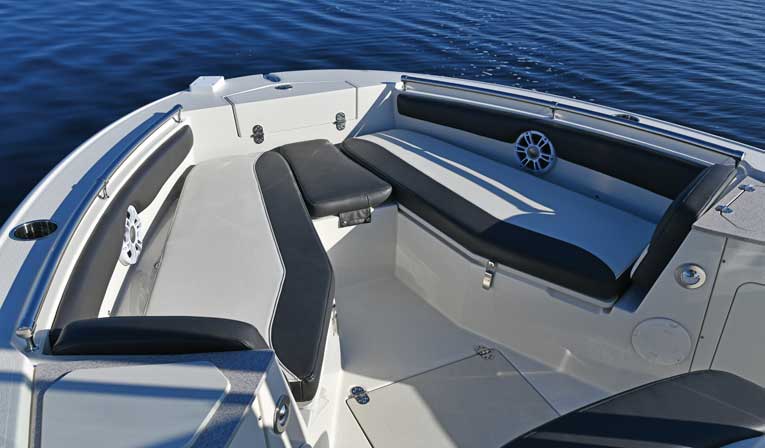Center of attention.
by Craig Ritchie
It’s no secret that center consoles have been increasing in popularity as more and more boating families discover the versatility of an open boat layout.
Center console’s multifunction utility attracts boaters who want to do a little bit of everything: Fish, swim, wakeboard, picnic, and enjoy quiet early mornings and beautiful sunsets on the water. With its care-free attitude, the center console — big on fun and low on maintenance — appeals to buyers who would rather spend time enjoying the boat than cleaning it. And when you add in the amazing fuel economy and easy maintenance of outboard power, you have a combination that’s really hard to beat.
Bigger inside than out
Built for performance
Centerpointe Yacht Services
centerpointeservice.com
Grand Valley Marine
grandvalleymarine.com
Marine Center of Indiana
marinecenterusa.com
Specifications
- LOA: 21’8″
- Beam: 8’5″
- Draft:
- Weight: 3,150 lbs.
- Fuel Capacity: 57 gals.
- Water Capacity: 13 gals.
- Power: 200 hp
- Price: Contact dealer
- Website: stingrayboats.com
Photo by Craig Ritchie
Photo by Craig Ritchie
Photo by Craig Ritchie





